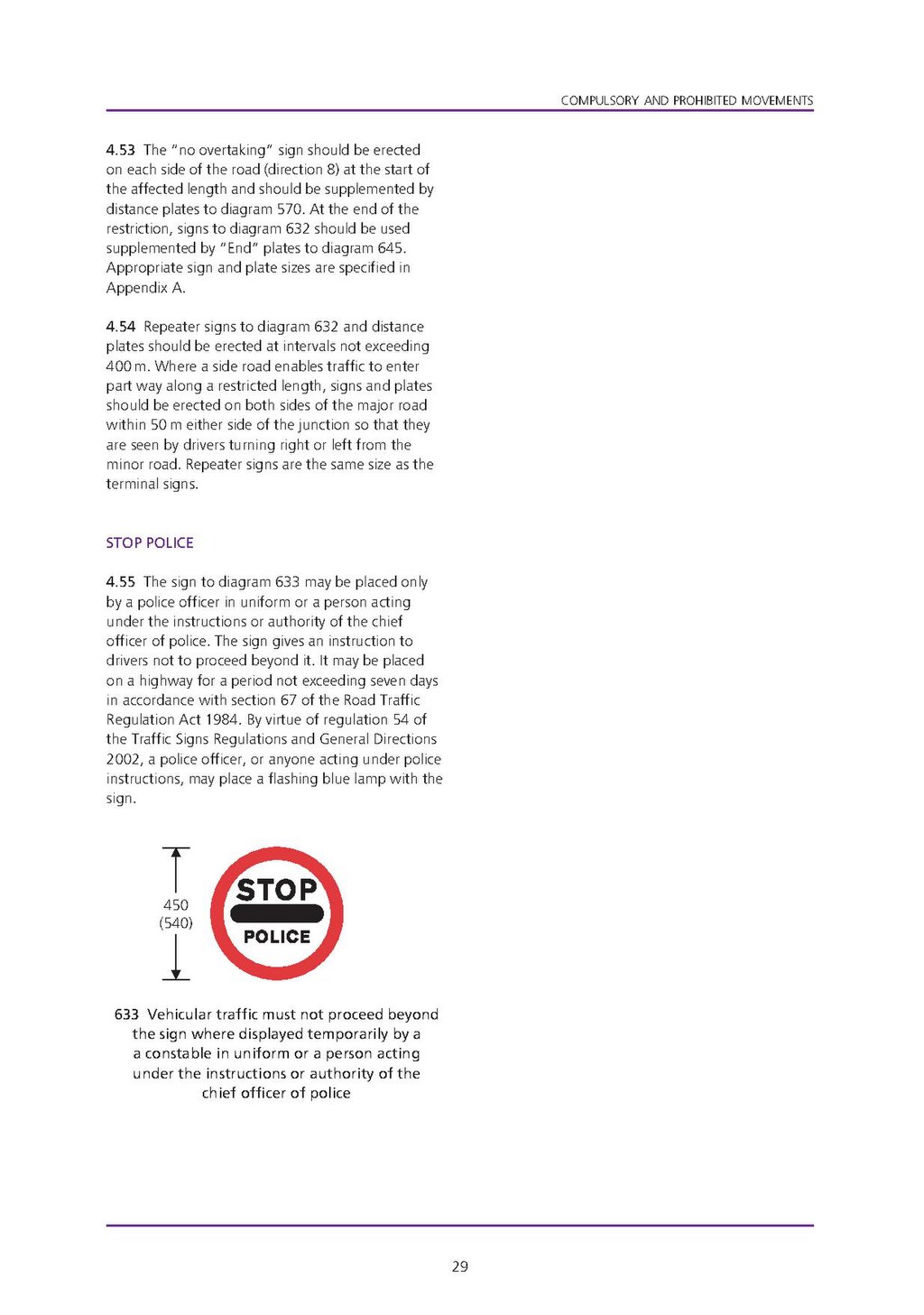4.53 The "no overtaking" sign should be erected on each side of the road (direction 8) at the start of the affected length and should be supplemented by distance plates to diagram 570. At the end of the restriction, signs to diagram 632 should be used supplemented by "End" plates to diagram 645. Appropriate sign and plate sizes are specified in Appendix A.
4.54 Repeater signs to diagram 632 and distance plates should be erected at intervals not exceeding 400 m. Where a side road enables traffic to enter part way along a restricted length, signs and plates should be erected on both sides of the major road within 50 m either side of the junction so that they are seen by drivers turning right or left from the minor road. Repeater signs are the same size as the terminal signs.
633 Vehicular traffic must not proceed beyond the sign where displayed temporarily by a a constable in uniform or a person acting under the instructions or authority of the chief officer of police
STOP POLICE
4.55 The sign to diagram 633 may be placed only by a police officer in uniform or a person acting under the instructions or authority of the chief officer of police. The sign gives an instruction to drivers not to proceed beyond it. It may be placed on a highway for a period not exceeding seven days in accordance with section 67 of the Road Traffic Regulation Act 1984. By virtue of regulation 54 of the Traffic Signs Regulations and General Directions 2002, a police officer, or anyone acting under police instructions, may place a flashing blue lamp with the sign.
29

